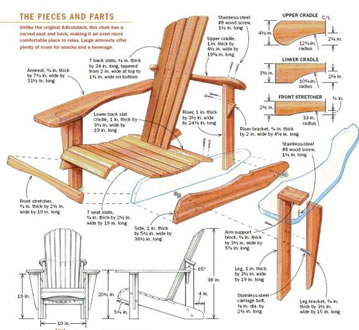A router table is a must-have addition to your shop or garage. It’s the useful and versatile tool that makes both of your hands-frees from workpiece control during the cut. With more control, most of the operations are easier to make – for example, routing grooves or edge profiles. Besides, it is much safer. However, not all router tables are created the same. Below, we will discuss the must-have features a router table should have.

Flat Top
The table surface should be flat and rigid. Precision is vital in many router table operations such as cutting joinery or the edge of a board. Even barely noticeable irregularities in the surface can lead to uneven edges, skewed joints, and other problems.
You want a router table with a rigid surface for two reasons. First, the table should be able to handle the weight of the router and the router lift without deflecting. Second, a router table cannot produce precise cuts if it flexes when you apply downward pressure.
Materials That Ensure Rigidity And Flatness
MDF is one of the most popular materials for commercial and shop-made router tables. MDF is cheap and quite reliable, so for a hobbyist or anyone on a tight budget MDF is a good choice. A quality MDF router table can serve you for years of medium-duty service. Just make sure it is made according to the latest standards and requirements.
In order to be rigid, an MDF router table should be 1 inch thick. It should be surfaced on both sides. Melamine that is often used for coating can withstand light-duty service. It prevents surface wear and ensures easy sliding. More expensive MDF router tables are surfaced with high-pressure laminate, which is more durable. This material is scratch-resistant; it is thicker and stronger than melamine. It also provides greater impact resistance. An MDF router table surfaced with high-pressure laminate will remain flat longer.
Some router tables are made of solid phenolic resin. This material is extremely rigid and durable; it is a perfect choice for a router table. It is impervious to moisture and will maintain its flatness and dimensions throughout many years. The lightness, durability and dimensional stability make these router tables worthy consideration, especially if you’re going to use the table a lot. Of course, these tables are more expensive than their MDF counterparts.
If you are searching for the most durable material and don’t care about the price, choose hefty cast iron. These router tables provide maximum flatness and durability. Cast iron absorbs vibration and ensures the utmost accuracy and stability.
Flat Base Plate
On most router table models, the router is attached to a plate, which fits into an opening in the top. The functioning of the table depends on the quality of the base plate. Since the base plate should be perfectly flat, it needs to be substantial and durable. Base plates made of machined or solid phenolic aluminum are worth consideration.
Of course, you should always choose a plate that is compatible with your table. Modern router tables are compatible with different plates; some also come with pre-drilled plates and blank plates that you can drill to fit. There are also one-size-fits-all plates. However, they are less strong and collect more debris that interferes with the operations you’re doing.
Besides being flat, the base plate should fit perfectly with the router table, so the table should have a plate-leveling system. Most router tables have a simple system that includes screws adjusted from the underside of the table. If you use the router in and out of the table, you want to consider how often you’re going to use the mounted router. Even if you leave the router on the table, the initial installation shouldn’t take hours. Search for a model that ensures easy installation and removal of the router.
Miter and T-Slots
Most operations you’re going to perform on the router table will probably include guiding the stock past the cutter and applying force against the table. At some point, you will need to do something with a miter gauge – for example, cutting a dado across a narrow piece of stock. A miter slot is also useful when you needed to secure feather boards and other accessories.
Some router tables also have T-slots in different locations to secure table accessories and attachments. A slot across the top of the fence will help you easily attach a flip stop when you need it. You can find T-slots on the front surface of the fence.
Easy-to-Position Fence
The fence is the most important part of the router table because you keep your workpiece pressed against it. You really want to have the fence that is up to the task. There are lots of fence models that are different in functionality and quality. The most expensive models have incremental positioning mechanisms. And there are also models that share the same basic qualities: they are square, rigid and straight. You don’t need to buy the most expensive fence, just choose the one that is easy to position and has a good adjustment range.
A Sturdy, Durable Base
If you want precise, accurate cuts, you need to keep the workpiece in contact with the cutter. However, you can’t-do this if the table is shifting. And wobbling table is simply hazardous. A router razor-sharp bit tens of hundreds times per minute and can do a lot of damage if the base is shifting.
Whether you are a hobbyist or a professional, a router table can really help with your operations. It provides portability without sacrificing stability and makes everything a whole lot easier.
